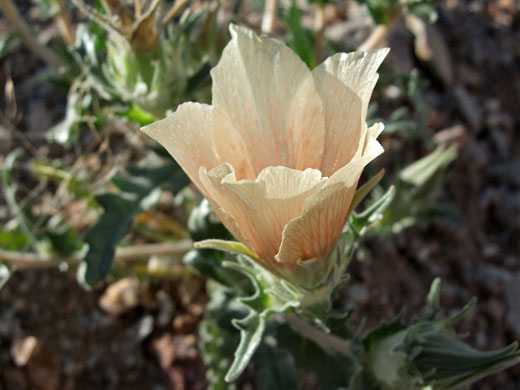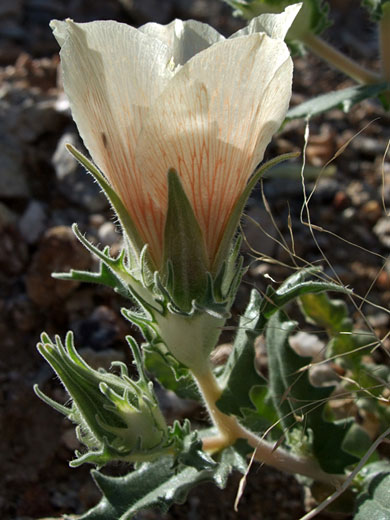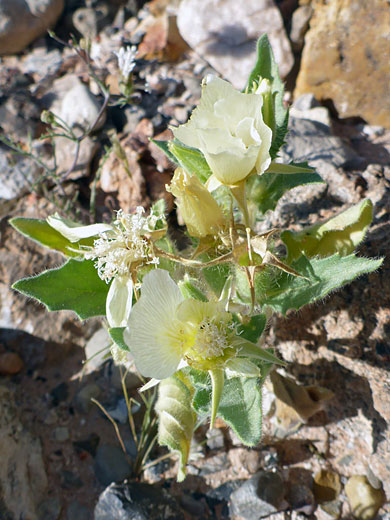
Orange-centered flower of mentzelia involucrata, near Contact Mine, Joshua Tree National Park, California
Common names:
Sand blazing star, white-bract blazing star
Family:
Scientific name:
Mentzelia involucrata
Main flower color:
Range:
Southeast California, extreme south Nevada and west Arizona
Height:
Between 4 and 16 inches
Habitat:
Open, rocky or sandy places; below 3,000 feet
Leaves:
Lanceolate, up to 5 inches long, with a covering of stiff, curved hairs, and lobes along the edge
Season:
January to May
Flowers of mentzelia involucrata are pale, but large and noticeable; the five petals are up to 2.5 inches long, colored cream to light yellow, often with thin orange veins branching from the base, extending about half way up. Petals are not fused but overlapping, forming a bell-shaped flowerhead. Underneath are five pointed green sepals, about half the length of the petals, while just below these are 4 or 5 bracts, mostly white but dark green at the margin, and with 3 to 10 thin, differently-sized lobes along the edge. Sepals project outwards when the flower is fully mature. The flower center contains many cream/orange stamens, variable in height.
Leaves are also irregularly lobed, and, like the stems and bracts, have a covering of rough hairs. The largest leaves grow at the base, forming an open rosette. The thick stems are pale-colored, often with an orange tint.
The plant inhabits hot, dry, exposed places in the Mojave and Sonoran deserts.
Leaves are also irregularly lobed, and, like the stems and bracts, have a covering of rough hairs. The largest leaves grow at the base, forming an open rosette. The thick stems are pale-colored, often with an orange tint.
The plant inhabits hot, dry, exposed places in the Mojave and Sonoran deserts.
All Contents © Copyright The American Southwest | Comments and Questions | Contribute | Site Map




